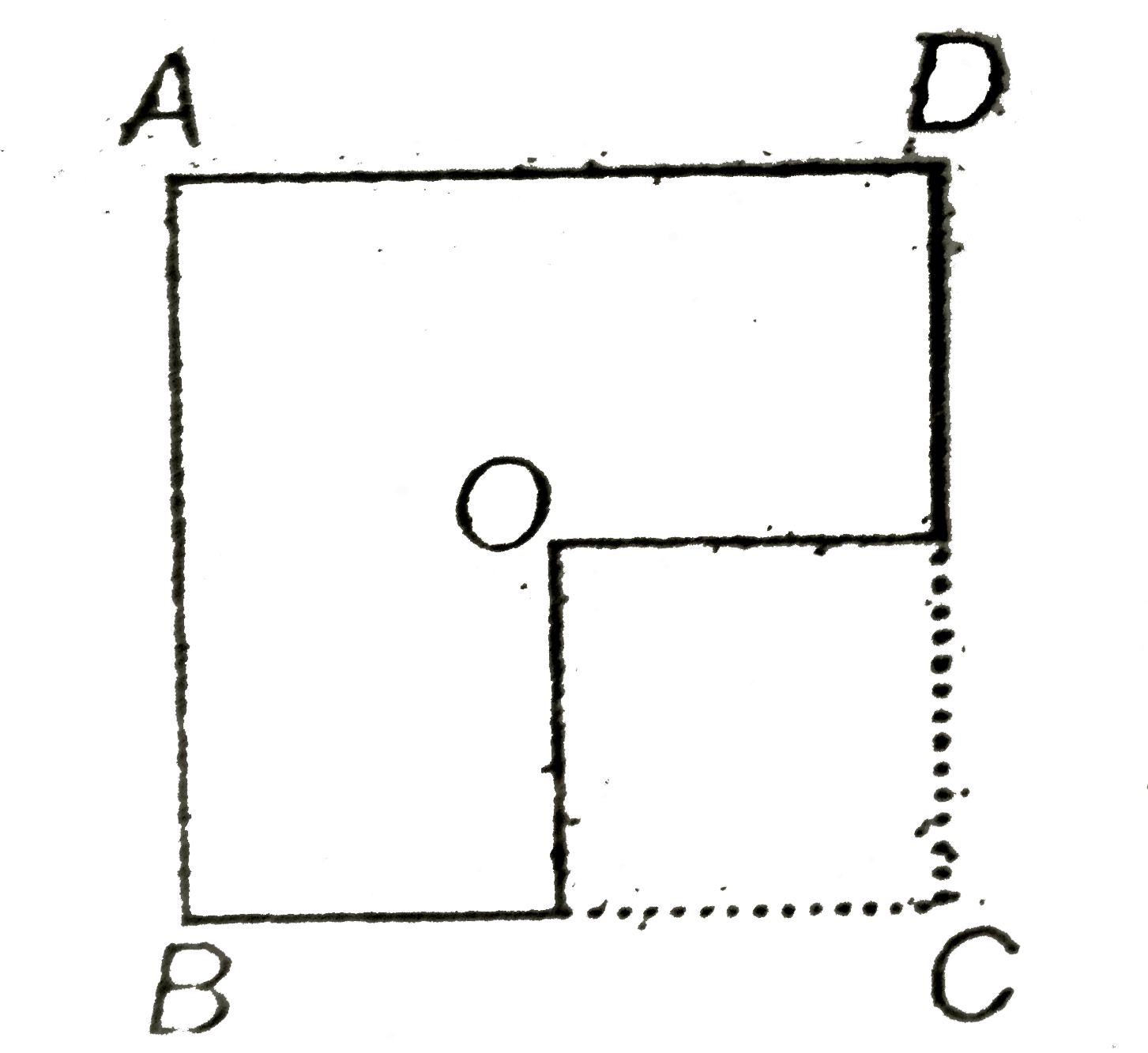Fig. shown a uniform square plate from identical squares at the corners can be removed. (a) Where is the centre of mass of the plate originally ? (b) Where is it after square 1 is removed ?
(c ) where is it after squares 1 and 2 are removed ? (d) Where is c.m after squares 1,2,3, are removed ?
(f) Where is c.m after all the four squares are removed ? Answer in terms of quadrants and axes.

The correct Answer is:(i) at O, (ii) diagonally from O to 3 (iii) along OY', (iv) at O (v) diagonally from O to 4 (vi) at O
(i) The centre of mass remains at O as the excluded masses are symmetrically placed. (ii) CM shifts from 0 to 3 diagonally (iii) CM shifts along OY (iv) CM does not shift. (v) CM shifts diagonally from 0 to 4 (vi) CM doesnot shift
Topper's Solved these Questions
- CENTRE OF MASSBOOK - ALLENCHAPTER - CENTRE OF MASSEXERCISE - EXERCISE-IV B
14 Videos
- CENTRE OF MASSBOOK - ALLENCHAPTER - CENTRE OF MASSEXERCISE - EXERCISE-V A
20 Videos
- CENTRE OF MASSBOOK - ALLENCHAPTER - CENTRE OF MASSEXERCISE - EXERCISE-III
42 Videos
- BASIC MATHEMATICS USED IN PHYSICS &VECTORS BOOK - ALLENCHAPTER - BASIC MATHEMATICS USED IN PHYSICS &VECTORS EXERCISE - EXERCISE-IV ASSERTION & REASON
11 Videos
- ELASTICITY, SURFACE TENSION AND FLUID MECHANICSBOOK - ALLENCHAPTER - ELASTICITY, SURFACE TENSION AND FLUID MECHANICSEXERCISE - Exercise 5 B (Integer Type Questions)
3 Videos
Similar Questions
Knowledge Check
A unifrom square plate has a small piece Q of an irregular shape removed and glued to the centre of the plate leaving a hole behind [Fig.] The moment of inertia about the z-axis is than
 AincreasedBdecreasedCthe sameDchanged in unpredicted manner
AincreasedBdecreasedCthe sameDchanged in unpredicted manner
From a uniform square plate the shaped portions are removed as shown in figure. The coordinates of centre of mass of the remaining plate are x,y Axes and origon are shown in figure.
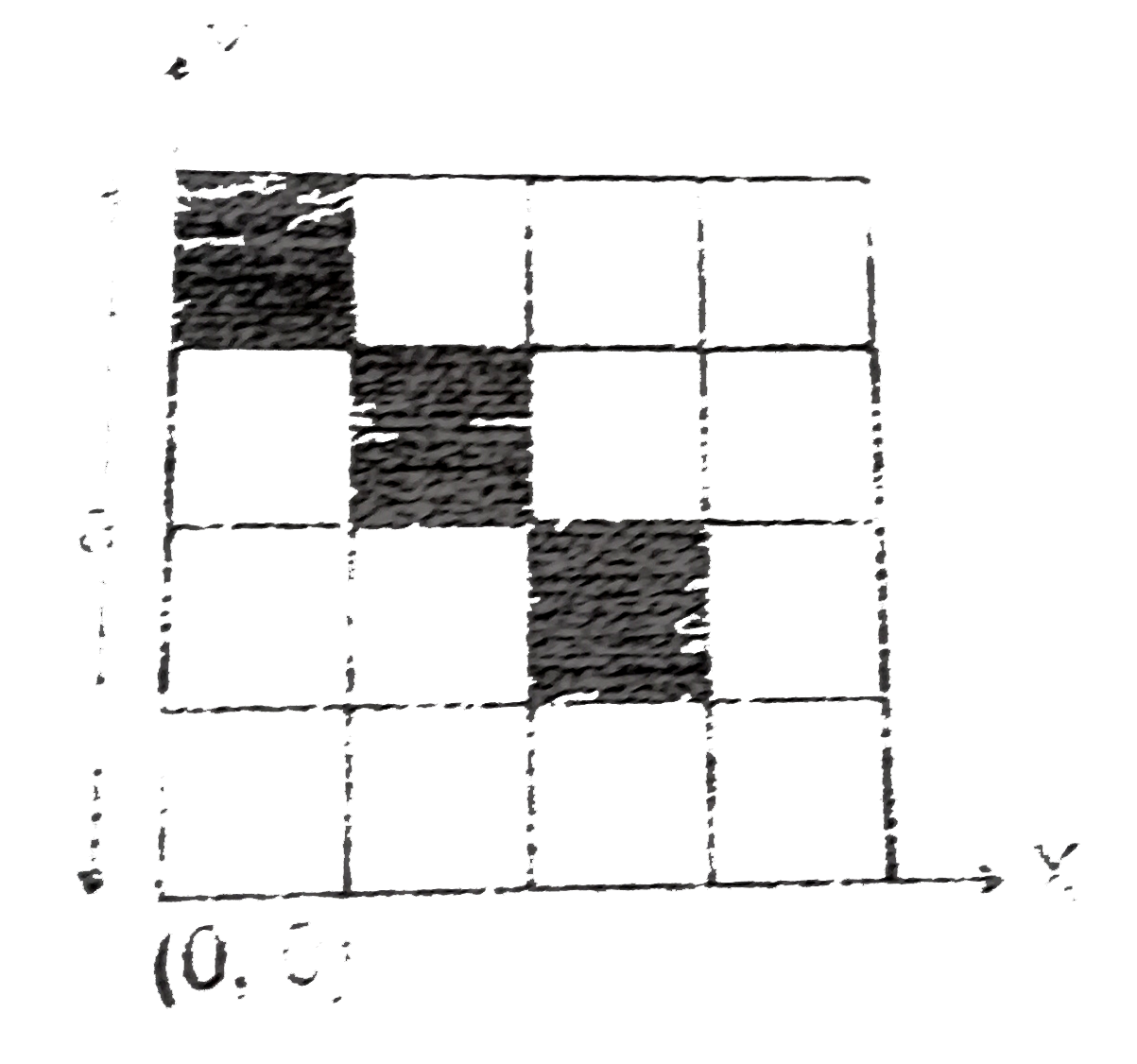
View Solution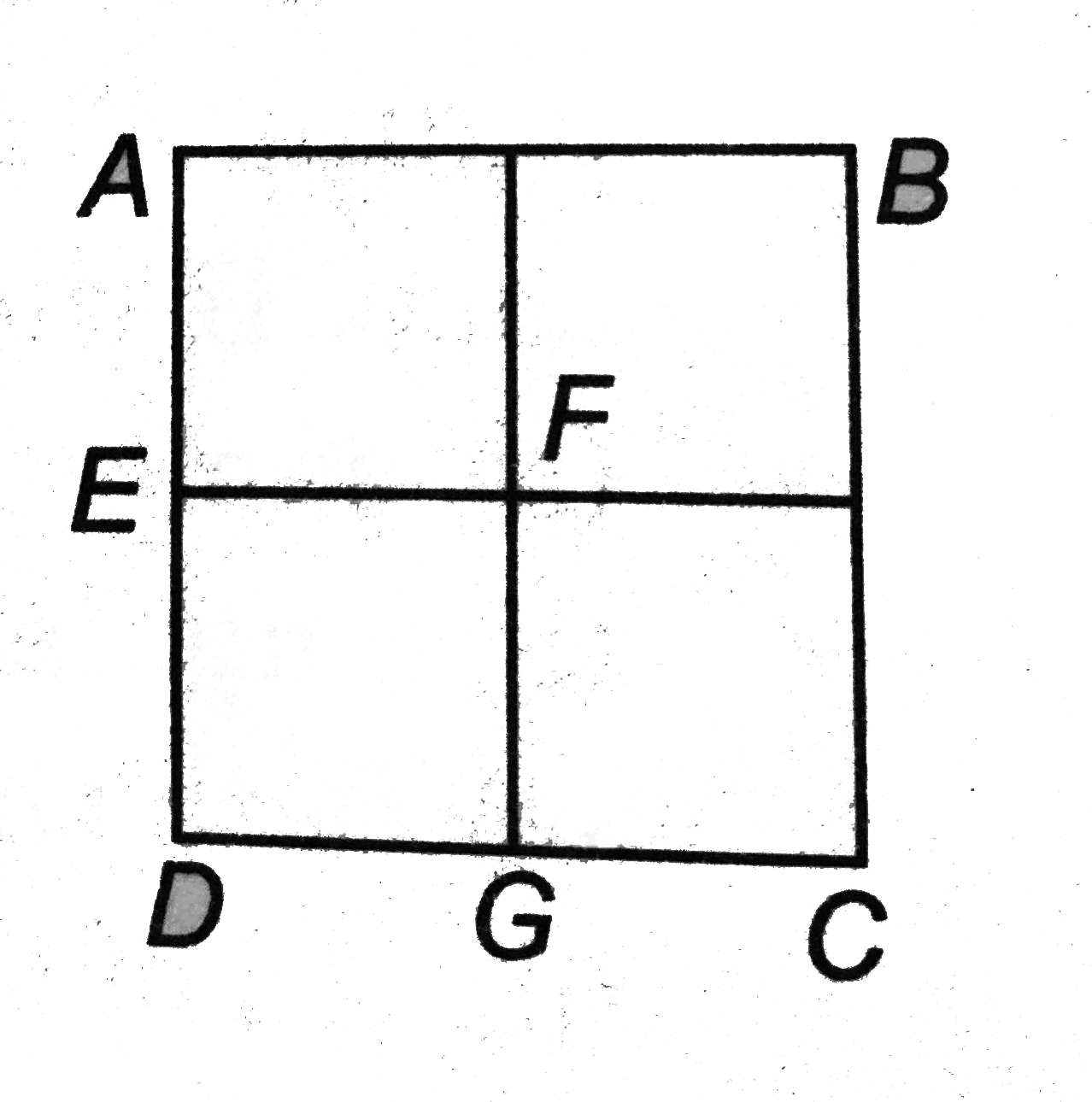
From a uniform square plate of side a and mass m, a square portion DEFG of side a2 is removed. Then, the moment of inertia of remaining portion about the axis AB is
View SolutionFour point masses are placed at the corners of a square of side 2 m as shown in the figure. Find the centre of mass of the system w.r.t. the centre of square.
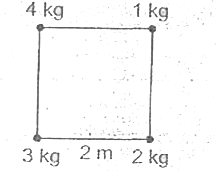
View SolutionA square of side a2 is removed from a disc having radius a . Find centre of mass of remaing portion.

View SolutionA uniform square plate has a small piece Q of an irregular shape removed and guled to the centre of the plate leaving a hole behind in figure. The moment of inertia about the z-axis is then,
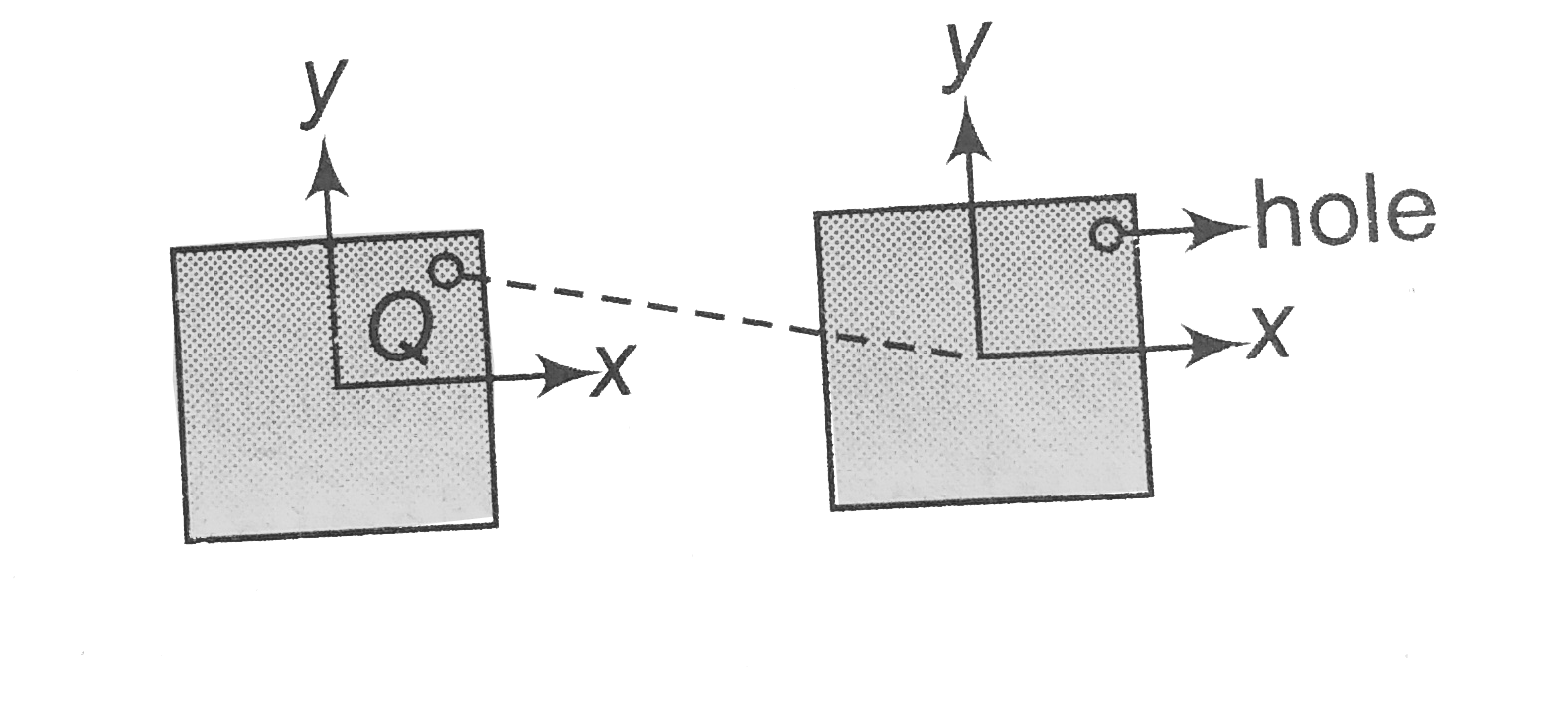 .
.
View SolutionA uniform square plate has a small piece Q of an irregular shape removed and guled to the centre of the plate leaving a hole behind in figure. The moment of inertia about the z-axis is then,
 .
.
View SolutionA uniform square plate of mass m is supported with its plane vertical as shown in the figure. Assume the centre of mass is on a horizontal the passing through A. If the cable at B breaks then just after that the angular acceleration of the plate is
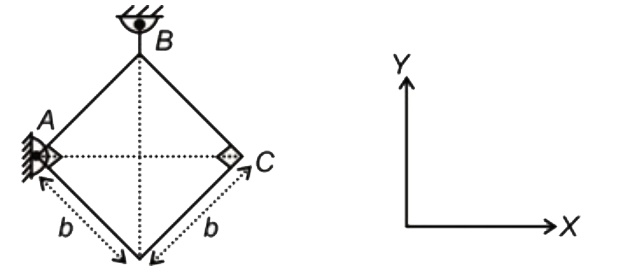
View Solution

